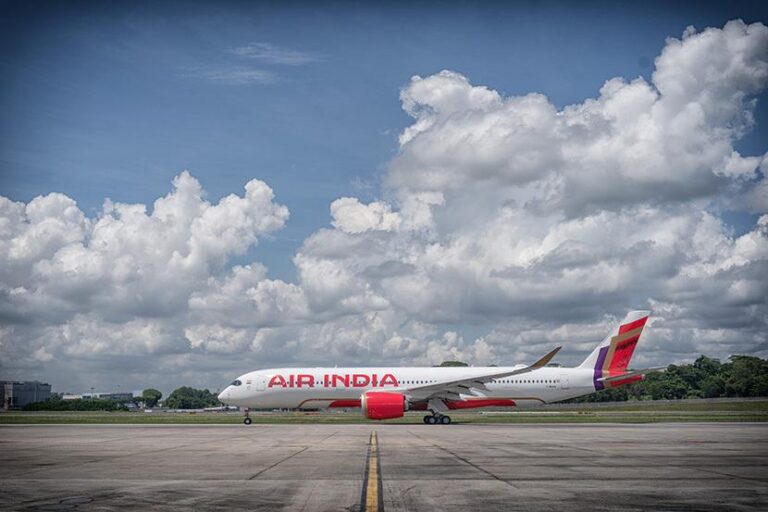Air India is grappling with significant operational disruptions following a recent crash that has prompted intensified safety inspections across its fleet. The incident has led to widespread flight delays and cancellations, affecting passengers at major hubs. Authorities and airline officials continue to investigate the causes of the crash while implementing more rigorous checks to ensure passenger safety, highlighting ongoing challenges for the carrier amid efforts to restore normalcy.
Air India Implements Enhanced Safety Protocols Following Recent Crash
In response to the recent aviation incident, Air India has intensified its safety measures across all operational avenues to restore public confidence and ensure passenger security. The airline has deployed rigorous additional screening processes for both aircraft and crew, leading to unavoidable but necessary flight delays and cancellations in key domestic and international hubs. These steps include enhanced pre-flight inspections, comprehensive system audits, and mandatory refresher training for flight and ground personnel.
Key components of the new safety protocols include:
- Extended maintenance checks for all fleets, focusing on critical avionics and structural components.
- Implementation of advanced diagnostic technology to detect potential mechanical anomalies.
- Strict adherence to updated International Civil Aviation Organization (ICAO) guidelines.
- Real-time monitoring of flights via enhanced telemetry systems.
| Safety Measure | Details |
|---|---|
| Aircraft Inspections | New protocols mandate double inspection cycles before takeoff |
| Crew Training | Mandatory safety drills increased by 30% |
| Flight Monitoring | Upgraded systems for real-time data transmission |
| Passenger Communication | Enhanced alerts regarding delays and safety updates |
Operational Impact of Flight Delays on Passengers and Airline Revenue
Passengers have encountered widespread inconvenience as unexpected flight delays ripple through Air India’s network. The airline’s increased inspections, initiated after the recent crash, have led to longer wait times, missed connections, and amplified crowding at airports. Many travelers are reporting extended layovers and the need to rebook flights amidst growing uncertainty. This disruption strains customer loyalty and puts pressure on the airline’s customer service centers, which are often overwhelmed with inquiries and requests for compensation.
From a financial standpoint, Air India is confronting significant revenue losses due to flight disruptions. Beyond the immediate impact of delayed departures, the cascading effect on scheduling results in increased operational costs such as crew overtime, accommodation for stranded passengers, and aircraft repositioning. Below is an overview of estimated revenue impacts and operational costs during such disruptions:
| Impact Area | Estimated Cost/Revenue Loss |
|---|---|
| Flight Delays Compensation | â‚ą15 crore |
| Operational Overtime Expenses | â‚ą8 crore |
| Passenger Rebooking & Accommodations | â‚ą10 crore |
| Revenue Lost from Cancelled Flights | â‚ą20 crore |
Key challenges faced include:
- Extended wait times and missed connections causing passenger dissatisfaction
- Increased passenger crowding at airports leading to logistical challenges
- Overburdened customer service centers handling high volumes of compensation and inquiry requests
- Financial strain due to compensation payouts and increased operational costs
- Potential erosion of customer loyalty affecting long-term revenue
- Dedicated support teams deployed at major airports to assist with flight changes and accommodations.
- Enhanced communication portals including mobile alerts and social media updates to keep passengers informed.
- Flexibility in ticket policies, allowing fee waivers for cancellations or rescheduling.
Strategies for Mitigating Disruptions and Restoring Passenger Confidence
In response to ongoing disruptions, Air India has implemented a series of rigorous measures aimed at minimizing further delays and reassuring passengers of their commitment to safety. The airline has increased the frequency of technical inspections on its fleet while collaborating closely with aviation authorities to expedite clearance processes. Simultaneously, customer service channels have been reinforced to provide real-time updates and streamline rebooking options, ensuring minimal inconvenience for affected travelers. Among these initiatives are:
| Measure | Purpose | Expected Outcome |
|---|---|---|
| Intensified Aircraft Checks | Ensure operational safety | Reduce risk of incidents |
| Customer Support Expansion | Assist disrupted passengers | Boost confidence and satisfaction |
| Flexible Ticketing Policies | Accommodate passenger needs | Increase goodwill and retention |
Beyond immediate operational adjustments, Air India is actively working to restore public trust through transparency and long-term strategic improvements. Regular briefings by airline officials and independent experts aim to dispel concerns by providing clear insights into safety audits and preventive protocols. Furthermore, the carrier is investing in staff training focused on crisis management and customer relations, striving to turn the current challenges into a learning opportunity that strengthens overall service reliability.
The Way Forward
As Air India grapples with intensified safety inspections and resultant flight delays following the recent crash, the airline and aviation authorities face mounting pressure to restore traveler confidence and ensure operational stability. Passengers are advised to stay informed through official channels as investigations continue and corrective measures are implemented. The unfolding situation underscores the critical importance of rigorous safety standards in maintaining the integrity of air travel.




